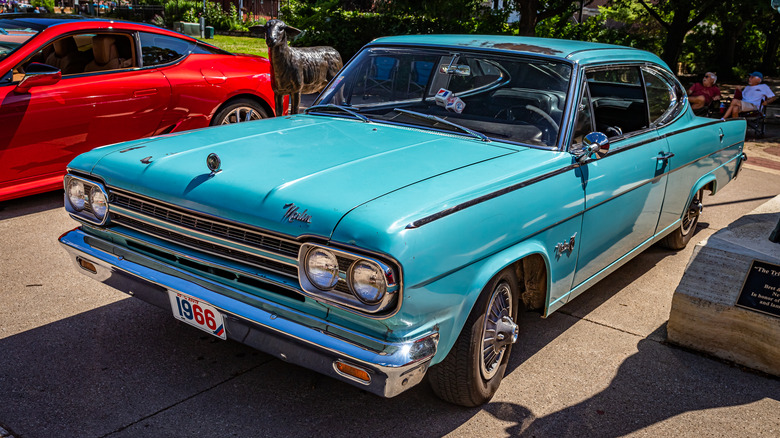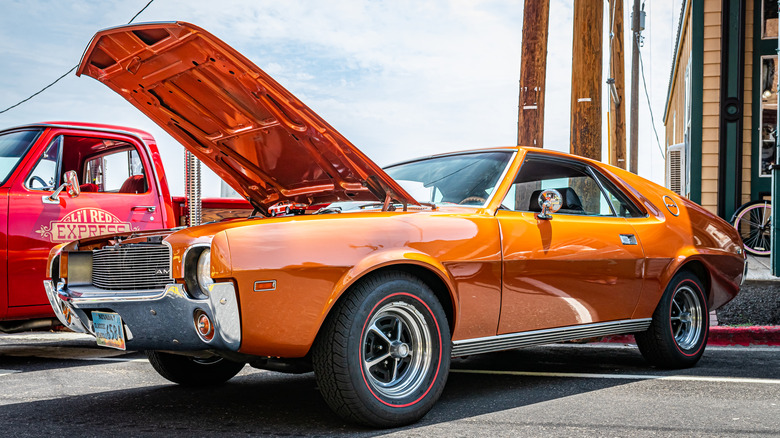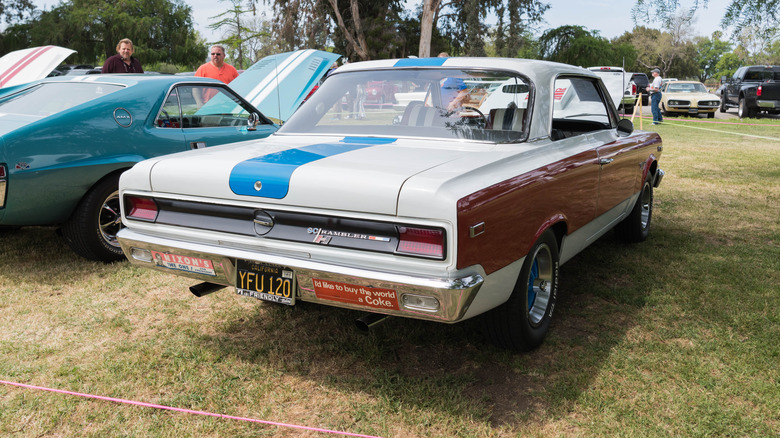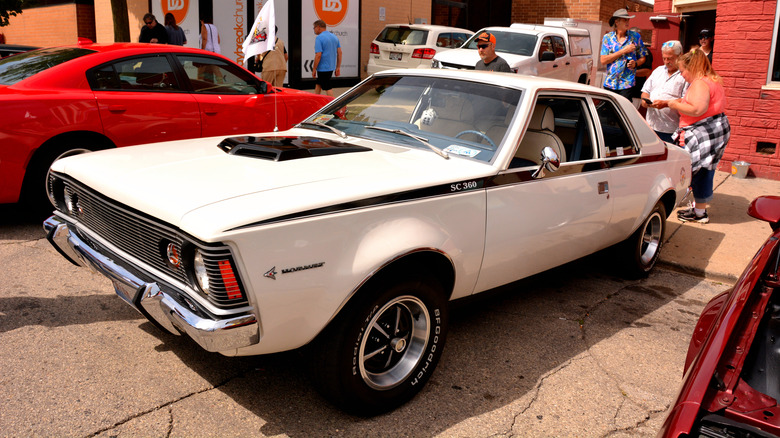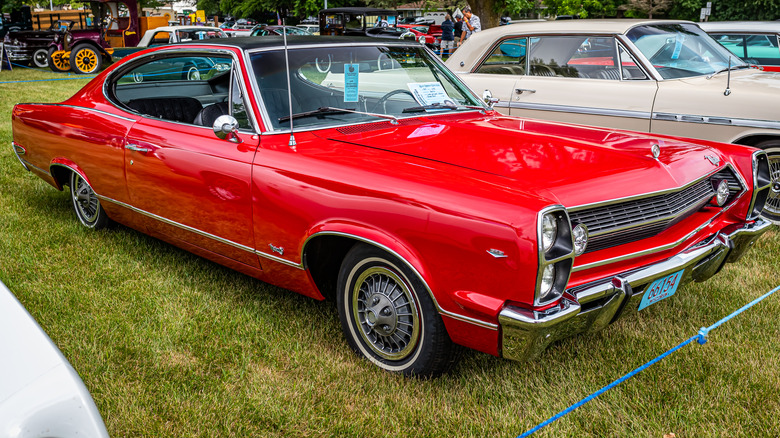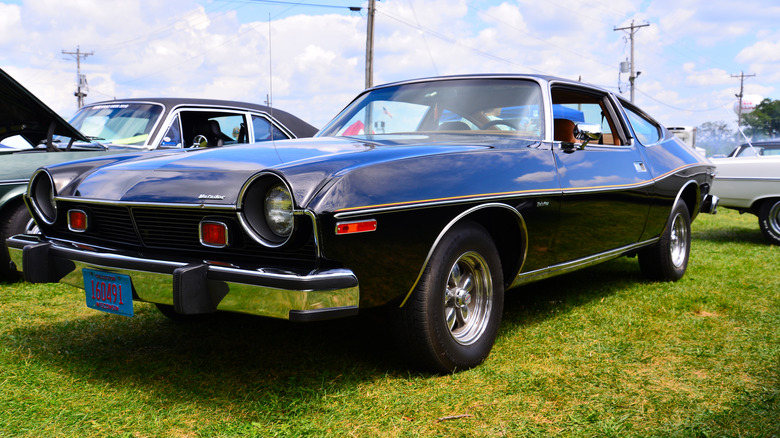5 Classic AMC Muscle Cars That Are Totally Underappreciated
American Motors Corporation, or AMC, is known to most as the custodian of the Jeep brand through the CJ era in the 1970s and early '80s or the company responsible for such design abominations as the Pacer and the Gremlin. It was formed in 1954 when Nash-Kelvinator and Hudson Motors merged. Between then and Chrysler's purchase of the company in 1987, AMC produced a fair share of impressive vehicles.
The disastrous Gremlin and quirky Pacer get lots of negative attention, while the Jeep CJ, Wagoneer, and Cherokee models produced by AMC have become classics, but AMC also cranked out several high-performance muscle cars during the 1960s and 1970s, back before CAFE standards and tightened emissions regulations made gas-guzzling V8 engines less desirable for consumers.
Many of AMC's muscle cars have gone largely ignored by collectors and enthusiasts, lost in a sea of Pontiac GTOs, Oldsmobile 442s, and Ford Mustangs. Let's take a look at a handful of AMC's most impressive and least appreciated muscle car models.
AMX
AMC built the AMX in the late 1960s as a prototype for the successful Javelin, and released the AMX as a production model beginning in 1968. At the time, the only other two-seat muscle car on the market was the Chevrolet Corvette, and the AMX had a base price of just $3,245. The 1968 AMX came with three V8 engine options: a 225 hp 4.8 liter, a 290 hp 5.6 liter, and a 315 hp 6.4 liter, all of which came with a four-barrel carburetor. The 6.4 liter (390 cubic inch) equipped AMX could go from zero to 60 in 5.7 seconds, a full two seconds faster than that year's 427 cubic inch-powered Corvette.
AMC dropped the two smaller engine options in 1970, and in 1971 eliminated the AMX as a solo model, making it the top trim level of the Javelin. A 330 hp 6.6 liter V8 was also introduced that year, dropping the AMX's zero to 60 time to 5.3 seconds. The AMX nameplate disappeared when the Javelin was discontinued in 1974, just as the U.S. oil embargo dealt a nearly fatal blow to the muscle car market.
Considering the neck-snapping performance capability of the AMX, surviving models are a relative bargain on the secondhand marketplace, with examples in excellent condition routinely selling for less than $25,000.
Hurst SC/Rambler
AMC inherited the Rambler nameplate from Nash and kept the model alive in various forms through the '50s and '60s. In 1969, its final production year, AMC introduced the Hurst SC/Rambler, which had a 315 horsepower 390 cubic inch V8 under the hood. Only 1,512 SC/Ramblers were built, 1,200 of which had a bold red and white paint scheme with a wide blue stripe running down the middle of the car (the rest got more modest paint job with blue stripes on the rocker panels).
The "Scrambler," as it was affectionately known, had a large hood scoop that fed air to the 800 cfm Edelbrock carburetor and could go from zero to 60 in 5.7 seconds and cover a quarter mile in 14.3 seconds, almost matching the performance of that year's Ford Mustang Mach I.
The SC/Rambler's limited initial production run makes it a rarity today, but if you can find one on the secondhand market, it will be sure to turn heads at the school drop-off line.
Hornet SC/360
Another inherited nameplate that became a one-year muscle car variant for AMC was the Hornet SC/360. The Hornet was originally a Hudson creation, and by the end of the 1960s, AMC had shrunk Hudson's full-sized model down to a compact. In 1971, AMC engineers chose to drop the 360 cubic-inch V8 from the AMX into the smaller Hornet.
There was an optional $199 Go package that added a four-barrel carburetor that boosted engine output to 285 hp and 390 lb-ft of torque. So equipped, the Hornet SC/360 could go from zero to 60 in 6.7 seconds.
The Hornet SC/360 is among the rarest models — only 784 were built in the single year of production, so examples rarely come on the secondhand market. Perhaps because of this scarcity, How Stuff Works referred to the Hornet SC/360 as "one of the muscle car era's better-kept secrets."
Marlin
The Marlin began as the Rambler Tarpon, a concept car AMC seen for the first time at the 1964 Chicago Auto Show. The Marlin was put into production for the 1965 model year and built based on the Rambler convertible, which gave it its sleek design that lacked a B-pillar.
Three different engines produced between 145 and 280 horsepower were available for the Marlin, but its 3,790 pound curb weight meant that even with the most powerful engine option, the Marlin required 9.3 seconds to reach 60 mph and more than 17 seconds to cover a quarter mile. The Marlin remained on the Rambler platform until 1967, when it was moved to the wider and longer Ambassador base.
AMC design chief Vince Geraci told Motor Trend he felt that was a welcome change for his team. "[The '67] was the most attractive Marlin because we were able to get a new package with a new body," he said. Unfortunately, the new design didn't boost sales enough to keep the Marlin alive and it was discontinued after that year.
Despite the short run, Marlins are not highly valued toda. Two in excellent condition sold for less than $20,000 in the past year.
Matador
Another AMC muscle machine based on the Ambassador platform was the Matador, which debuted in 1971 as a rebadged version of the Rebel. The Matador was available in a number of forms: as a coupe, wagon, or sedan, and came with a range of engine options from a 3.8 liter inline six cylinder to a 6.6 liter V8. Four-door sedan models were often used as taxis or police cruisers, and AMC sold more than 50,000 1972 model year Matadors.
Roger Penske brought the Matador to NASCAR in 1972, and driver Mark Donohue credited the car's four-wheel disc brakes with giving him the win at the Riverside road course the following January. Bobby Allison took over Donohue's seat in 1974 and 1975, winning four races in that span.
Allison told the Fayetteville Observer that Matadors were among his favorite cars to race during his Hall of Fame career. "Part of the reason I liked them was because they were incredibly popular with the fans," Allison said. "I remember everywhere we went, the fans wanted to see the car beat the Chevrolets, Dodges and Fords. It was considered an underdog for sure."
The Matador is still an underdog today, with two selling earlier this year for less than $4,500.
